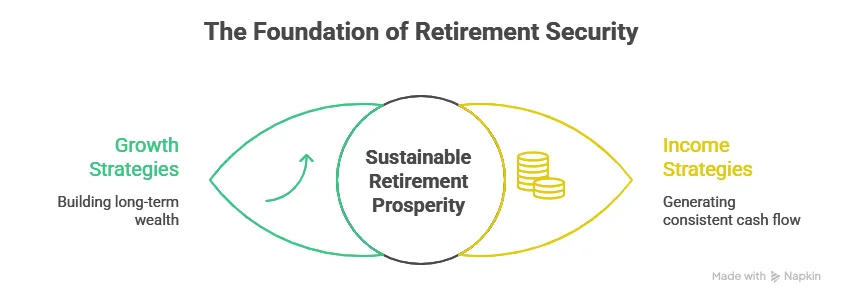
The "Triple Squeeze" on Your Retirement: Navigating COLA, Cash, and a Longer Life
If you’re in or near retirement, I know the biggest question on your mind: "Will my money last for my entire lifetime?"
It’s the number one goal, and frankly, the number one worry I hear from the folks I talk to. That worry has felt heavier recently. We’ve all felt the sting of inflation over the past few years—at the grocery store, at the gas pump, and especially in our healthcare and housing costs.
Even as the inflation rate slows down, those higher prices are here to stay. This creates a real challenge for your financial plan. I want to walk through three key factors today, using some new data, that every retiree needs to understand.
🤔 The COLA Squeeze: Why Your Social Security Check Feels Lighter
You may have heard the news: the Social Security Administration announced a 2.8% cost-of-living adjustment (COLA) for 2026. For the average retiree, that’s about $56 more per month.
While every dollar helps, does $56 feel like it will cover the actual price hikes you’re seeing? Probably not.
Here’s the disconnect: The COLA is calculated using an index (the CPI-W) that tracks spending for "Urban Wage Earners and Clerical Workers." But your financial fingerprint in retirement is completely different. You likely spend a much larger chunk of your budget on things like healthcare and housing, and those costs have been rising much faster than the overall average.
To make matters worse, that $56 raise often gets eaten up before it even hits your bank account. For example, the latest estimates from the Medicare trustees project that Part B premiums could rise by $21.50 per month in 2026. That one increase could wipe out nearly 40% of the average COLA.
It feels like one step forward, one step back. The takeaway is clear: We cannot rely on COLA alone to maintain our purchasing power.

🎉 The Good News (and the Challenge): Living Longer!
Here is some wonderful news: we are living longer, healthier lives than ever before! This is a fantastic development, and it means more time for family, hobbies, and travel.
But this wonderful gift of time brings a new financial challenge. We have to plan for our money to last not just 20 years, but potentially 30 years or more.
Look at the data from the Social Security Administration. If you're 65 today, your average life expectancy is 83 (for a man) or 86 (for a woman). But those are just averages. As this chart shows, there’s a very real possibility you'll live well into your 90s. We have to plan for that 90th percentile, not just the average.

In financial planning, we call this longevity risk—the risk of outliving your money. And let's be honest, that's a much bigger problem than the risk of leaving too much behind.
This is why your retirement plan must have a component designed for long-term growth. Just "playing it safe" with income-only investments might not be safe at all over a 30-year retirement.
📉 The Cash "Trap": When 'Safe' Isn't Safe
For the last couple of years, you could finally earn a decent return on your "safe" money—your cash, 6-month CDs, and money market accounts. It felt good, didn't it? It felt secure.
But the landscape is changing. With inflation moderating, the Federal Reserve is expected to continue lowering interest rates. This means the income you get from your safe cash is likely to go down.
Here is the real problem, as the chart below shows. It’s a double-whammy:
Inflation: Even "moderate" inflation is silently eroding the buying power of your cash every single day.
Falling Rates: The interest you’re earning to fight that inflation is shrinking.
This is what I call the cash trap. It feels safe, but as the orange line ("Real Income After Inflation") on this chart makes painfully clear, it's often a guaranteed way to slowly lose purchasing power.

Cash is for emergencies and near-term expenses, not for your long-term retirement.
What's the Solution? Building a Resilient Plan
So, what do we do? We know the COLA won't be enough, we're living longer, and cash is losing its punch.
The answer isn't to take wild risks. The answer is to be smart and balanced. A solid retirement plan needs to do more than one job. It needs to provide:
Stability & Income: For your near-term needs (the next 1-5 years), using bonds and other stable assets.
Long-Term Growth: To fight inflation and last for that 30-year retirement, which is where stocks (equities) play a crucial role.
Putting these pieces together—balancing growth and income to match your specific needs and timeline—is the key to building a financial plan that gives you confidence. It’s about ensuring your money works for you, letting you enjoy that long, healthy retirement you've worked so hard for.
